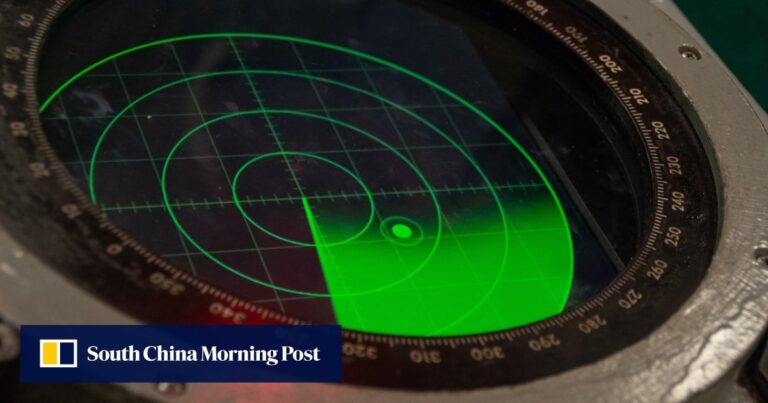In electronic warfare, military forces must first convert the detected analog signals, or electromagnetic waves, into a digital form made up of 0s and 1s.
The digital signals must then be analyzed on a computer so that tactical actions can be taken, such as identifying, locating, deceiving the enemy, and suppressing enemy defenses.
To avoid dropping out of signals, ADCs must work at full speed, collecting billions of samples per second and generating vast amounts of data.
This process “severely limits the equipment response speed and leads to increased power consumption and severe heating in advanced electronic warfare receivers,” Ning and his colleagues wrote in a peer-reviewed paper published in the Chinese journal Microelectronics earlier this month.
“In the field of electronic warfare receivers, the industry is still focused on reducing signal processing latency and improving equipment response speed by increasing ADC conversion rates, and on reducing equipment power consumption by lowering ADC power consumption,” they wrote.
“However, the difficulty of designing ultra-high-speed, low-power ADCs has increased dramatically, and improvements in equipment performance are reaching an increasingly limited limit.
“This road has reached its limit.”
Ning also serves as director of the Application Specific Integrated Circuit (ASIC) Innovation Research Institute, a joint venture between UESTC and Chinese telecommunications giant Huawei.
The joint lab was established in May last year with 23 million yuan (US$3.17 million) in funding from Huawei. According to the UESTC webpage, the lab aims to conduct research and technology transfer in the field of ultra-low power mixed analog-digital integrated circuits.
Huawei and Ning teams have worked together on intelligent detection systems for sensing and transmission, and have achieved various achievements, including lightweight, high-precision sensing detection chips, algorithms, and hardware systems.
To develop their ultrafast ADC, Ning’s team took inspiration from electroencephalogram (EEG) monitors, which measure electrical activity in the brain.
In a real electronic showdown, radar signals are usually intermittent, just like brain signals: most of the time, the brain’s sensors receive only noise.
To conserve power, some wearable EEG monitors use event-triggered ADCs to simplify signal conversion and feature extraction.
This prompted Ning’s team to develop the world’s first smart ADC for military applications.
The chip can analyze analog signals before they are converted to digital and determine whether they are a target radar signal or noise.
Only if a radar signal is seen will it issue an alert and begin full power analog to digital conversion.
“[Therefore] “We can consistently achieve power consumption reductions of more than 30 percent across a range of environments,” Ning’s team wrote in their paper, calling the work “groundbreaking.”
The chip is based on a mature 28-nanometer process, making it cost-effective and easy to mass-produce.
According to Chinese customs data, in the first half of this year, China exported about 260 billion units of mature process chips, an increase of more than 25 percent.
Aided by advanced technologies, the Chinese military is beginning to shift from defense to offense.
Chinese state media said it was the first time the Chinese military had conducted an operation in sensitive waters near North America, highlighting the military’s expanding intelligence support capabilities.
According to video footage released by the U.S. military, the Chinese bombers were equipped with large electronic warfare pods under their wings rather than strategic missiles, and they intercepted the military aircraft along with Canadian fighter jets.
Some military experts say China’s rapid growth in electronic warfare capabilities is due to the rapid growth of its communications industry.
According to the latest official data, China has built about 4 million 5G base stations, 20 times more than the United States.
Despite U.S. sanctions, Huawei saw its profits rise 145.5 percent last year thanks to major breakthroughs in microchips and other cutting-edge technologies, including the world’s first smartphone that can connect to satellites 36,000 kilometers away without an external antenna.
According to the team’s website, the company is the largest employer for Ning High School students after graduation.
Each year, about 1.6 million Chinese college students graduate from communication engineering majors, more than any other major.



